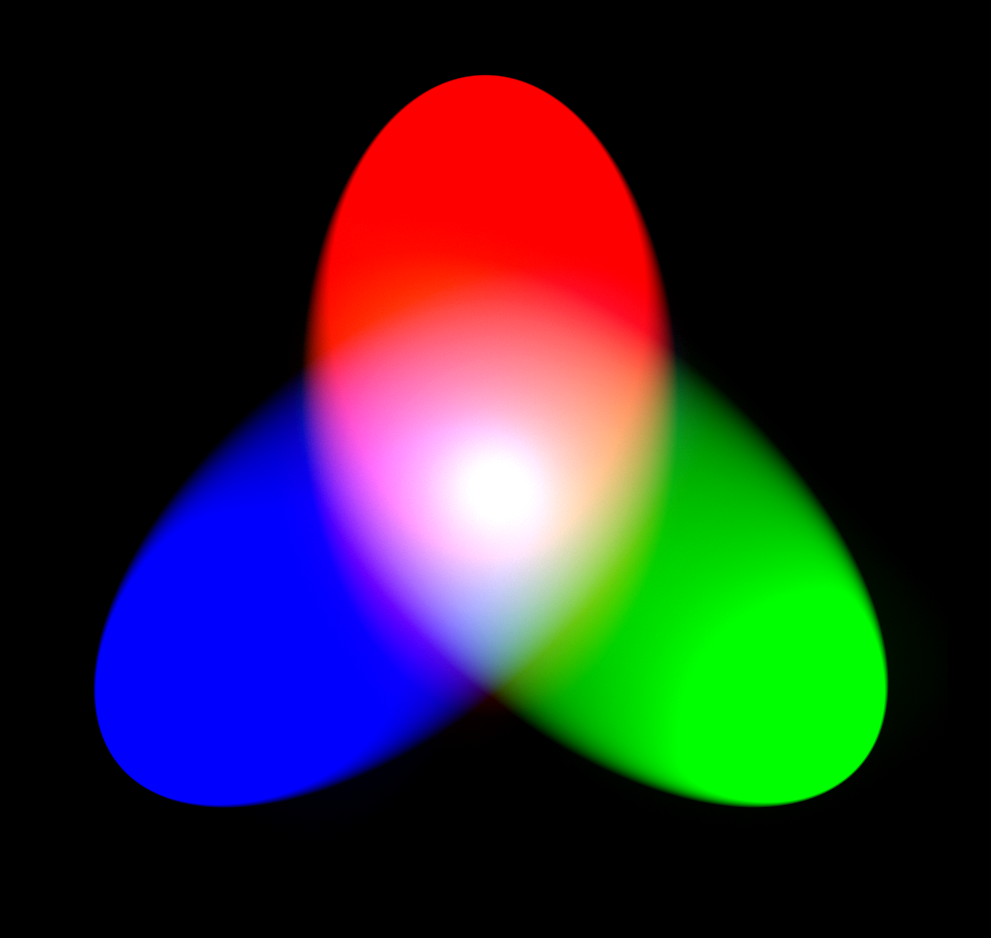It takes three colours to trick two eyes
05.14.2018You would think that you are seeing every colour there is on all these screens! But that is not the case as only three colours are necessary to produce them all. The eye thinks life is rosy in the world of pixels. But without blackening the picture, the computer coding of colour gives carte blanche to optical masquerades.
The facilities of expressive colour games, which are legion, serve as smoke screens here to mask the difficulty of one of the most technical of subject matters.
Back in 1869, two French scientists called Louis Ducos de Hauron and Charles Cros – the poet, put forward their respective inventions at the Academy of Sciences. Although they had never consulted each other, the two men presented competing projects with regards to colour photography on paper. Their conclusions were similar and they were at the origin of modern day three colour process, through which all the colours visible to the human eye are reproduced from the three primary colours (a primary colour is not composed of other colours).
RGB (red/green/blue) refers to a system of computer coding of chromatic fields using additive synthesis in a trichomatic RGB monitor. Each primary colour corresponds to a code. Each pixel (shortened version of « picture element », or unit of a digital image) was assigned a numerical value that defined the respective brightness of the three primary colours of red, green and blue. This colour frame is invisible to the naked eye.
By using additive synthesis of these three colours in all possible proportions, one can obtain the whole spectrum of copiable colours.
Trichromatic colour vision is the ability of human beings to see different colours and is mediated by the actions of three colour sensing cone cells. The latter turn an electromagnetic signal into a nerve signal that results in colour vision. These three types of cone cells perceive different wavelengths in the light spectrum. The latter can therefore be reproduced in the human eye by playing on these three types of signals.
Colours do not exist in absolute terms. They have a visual perception that is the result of an operation in the neural network. But the cognitive process is inseparable from other factors shaping this perception such as culture, geography, psychology, memory and language… Therefore it is hard to rationalise whether colours are natural or artificial. However, the RGB system offers colours that mimic original colours by using synthetic effects that the naked eye does not see and which are integrated within the totality of known colours.
The RGB (red green blue) project run by Carnovsky (art duo Francesco Rugi and Silvia Quintanilla) is even more interesting. It is an exploration of graphic surface deepness by arranging the three primary colours in such a way as to produce chromatic stimuli that modify perception by creating static interaction. The eye distinguishes graphic layers and subject layering differently depending on the colour filters applied. The flat surface appears to acquire depth. This smart trichromatic effect makes the eye ‘wobble’ and take a step backwards with perception subjected to the unknown. The Carnovsky team has collaborated with diptyque on a tricolour scenography of the Garden of Hesperides.


